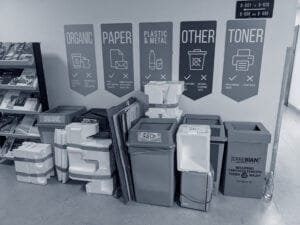Ecologically Safe Sun Protection in National Parks
HIGHLIGHTS
- Sunscreen protects us from the damaging effects of the sun, but recent research suggests that certain sunscreen chemicals are harmful to coral reefs and other aquatic life.
- Reef-friendly sun protection behaviors could reduce use of harmful sunscreens and protect parks but several behavioral barriers stand in the way of the adoption.
- To address these barriers, we created a playbook of design ideas for park administrators and friends of parks to leverage in their own contexts.
The Challenge
Sunscreen protects us from the damaging effects of the sun, but recent research suggests that certain sunscreen chemicals are harmful to coral reefs and other aquatic life. These chemicals are unfortunately widespread: an estimated 70-80% of sunscreens on the market in the United States contain oxybenzone and/or octinoxate, for example. The U.S. National Park Service (NPS) has detected high concentrations of oxybenzone, octinoxate, and avobenzone around coral reef sites, and has identified ecologically friendly sun protection as an area of focus. Continued use of sunscreens with these chemicals may threaten the health of coral reefs, the tourism and fishing industries they enable, and ultimately the welfare of people and wildlife in and around national parks.
Our Approach
Reef-friendly sun protection behaviors, like using mineral-based sunscreens, staying in the shade, and wearing sun-protective hats and clothing, could reduce use of harmful sunscreens and protect parks. But many park visitors don’t use these methods.
With researchers at George Mason University and Haereticus Environmental Lab, and in collaboration with NPS park staff, we assessed the behavioral barriers that may stand in the way of the adoption of reef-friendly sun protection behaviors. Some of the barriers we uncovered include:
- Sunscreen is healthy: There is substantial evidence demonstrating the harmful effects of sun exposure on human health. People are trying to protect themselves—and their families—from these harms. The prevailing message from health professionals and public health experts has been to use sunscreen; comparatively, little messaging has addressed the potential environmental risks of sunscreens.
- Sunscreen choice is invisible: The decision and action of purchasing sun protection are not typically one that is overtly social and visible. Even if the intention is formed to buy an alternative sun protection method, people may not follow through because there is no social accountability. There’s no mechanism for public or peer shaming as a consequence of failing to use ecologically friendly sun protection methods.
- That’s not me: In the U.S., environmental issues are often highly polarized and linked to different identities. People may resent, reject, or ignore the messaging because their own perceived identity does not match the perceived identity of the messenger or the recipient of the message.
To address these barriers, we created a playbook of design ideas for park administrators and friends of parks to leverage in their own contexts. Each design offers details on the behavioral principles that support the idea as well as the resources needed to implement it. A few of our favorite design ideas include:
- Make-Your-Own Sunscreen Bar: At concessions or visitor centers, local parks could set up a sunscreen bar where visitors can purchase a small container and fill it with the ecologically friendly sunscreen of their choice and pay by weight. To foster more inclusivity, parks should consider making sensitive-skin, hypoallergenic, and tinted options available.
- Junior Ranger Sun Protection Badge: The Junior Ranger Program is a very popular activity-based program conducted in many parks across the country. Kids and their families can earn badges by completing place-based activities at different park locations. The Sun Protection Badge might be earned by completing some of the following activities, tailored to different age groups:
- Make your own mineral sunscreen
- A scavenger hunt at a grocery store to find and take a picture of harmful sunscreen chemicals and ecologically friendly sunscreen ingredients
- A coloring book featuring people wearing sun-protective gear or prompting kids to draw sun-protective gear on beachgoers
- Simple number puzzles to calculate the amount of sunscreen that enters the ocean every day at beaches in a given state. For example, “Each person puts on 0.5 oz of sunscreen. If there are 100 visitors to each beach in Hawaii every day, and there are 40 beaches, how much sunscreen is entering the water?”
- Public Art Displays: Install an eye-catching art display near beaches or visitor centers that shows the volume of sunscreen entering the ocean every year or the rate of coral bleaching to communicate the magnitude of the problem.
Read our playbook to see all design recommendations.
Takeaway
Our ocean ecosystems face numerous pressures from human activity. Fortunately, everyday decisions like which sun protection method to use can keep both people and our oceans safe.
Interested in learning more about our work on environment- and health-related behaviors? Reach out to us at info@ideas42.org.
Partners










